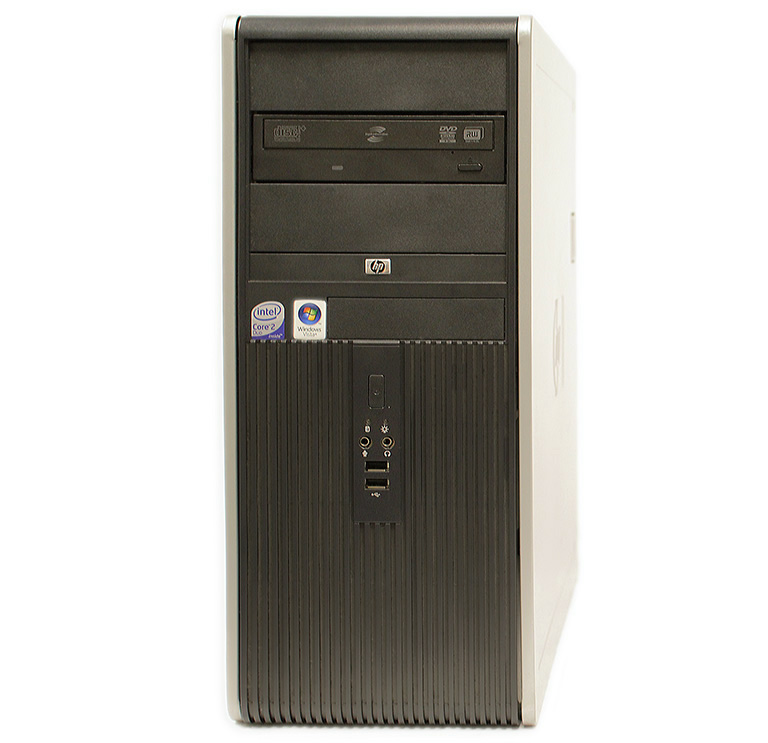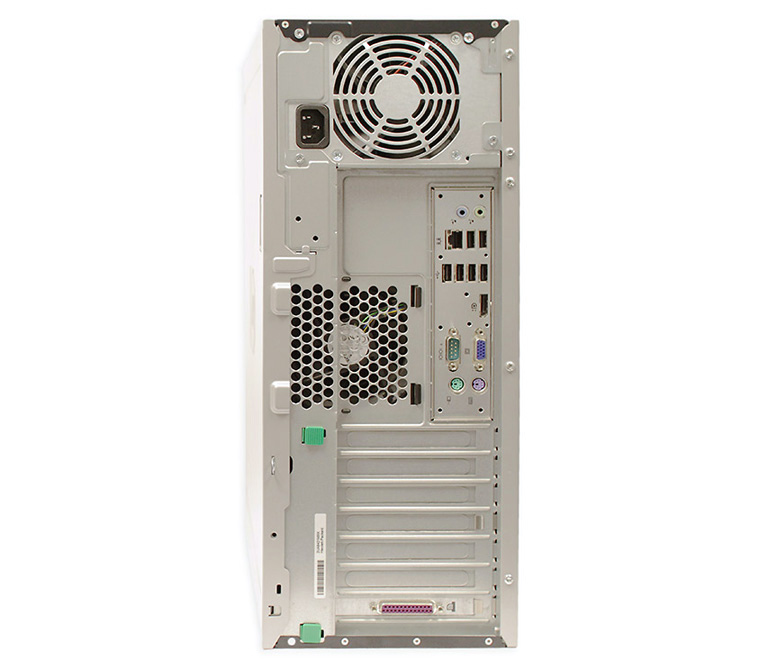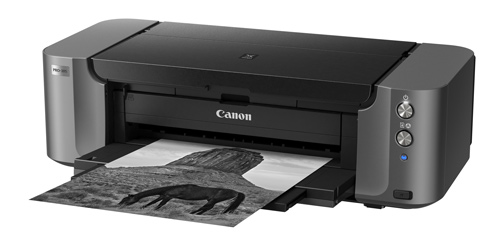An overview of the buttons and ports on a computer, including information regarding various peripheral devices.
A program of Goodwill Community Foundation® and Goodwill Industries of Eastern North Carolina Inc.® (GIENC®), all GCFLearnFree.org® educational content is designed and produced in the GCF Global headquarters in Durham, N.C.

at edu.gcfglobal.org
General Objective
Preparation time for facilitator
Competence area
Name of author
Resource originally created in
Introduction
Take a look at the front and back of your computer case and count the number of buttons, ports, and slots you see. Now look at your monitor and count any you find there. You probably counted at least 10, and maybe a lot more.
Each computer is different, so the buttons, ports, and sockets will vary from computer to computer. However, there are certain ones you can expect to find on most desktop computers. Learning how these ports are used will help whenever you need to connect something to your computer, like a new printer, keyboard, or mouse.
Watch the video below to learn about the buttons, ports, and slots on a desktop computer.
Front of a computer case

Optical Disc Drive
Often called a CD-ROM or DVD-ROM drive, this lets your computer read CDs and DVDs.
Power Button
The power button is used to power the computer on and off.
Audio In/Audio Out
Many computers include audio ports on the front of the computer case that allow you to easily connect speakers, microphones, and headsets without fumbling with the back of the computer.
USB (Universal Serial Bus) Port
Most desktop computers have several USB ports. These can be used to connect almost any type of device, including mice, keyboards, printers, and digital cameras. They will often appear on the front and back of the computer.
Back of a computer case
The back of a computer case has connection ports that are made to fit specific devices. The placement will vary from computer to computer, and many companies have their own special connectors for specific devices. Some of the ports may be color coded to help you determine which port is used with a particular device.

Power Socket
This is where you’ll connect the power cord to the computer.
Audio In/Audio Out
Almost every computer has two or more audio ports where you can connect various devices, including speakers, microphones, and headsets.
Ethernet Port
This port looks a lot like the modem or telephone port, but it is slightly wider. You can use this port for networking and connecting to the Internet.
USB Ports
On most desktop computers, most of the USB ports are on the back of the computer case. Generally, you’ll want to connect your mouse and keyboard to these ports and keep the front USB ports free so they can be used for digital cameras and other devices.
Monitor Port
This is where you’ll connect your monitor cable. In this example, the computer has both a DisplayPort and a VGA port. Other computers may have other types of monitor ports, such as DVI (digital visual interface) or HDMI (high-definition multimedia interface).
Serial Port
This port is less common on today’s computers. It was frequently used to connect peripherals like digital cameras, but it has been replaced by USB and other types of ports.
PS/2
These ports are sometimes used for connecting the mouse and keyboard. Typically, the mouse port is green and the keyboard port is purple. On new computers, these ports have been replaced by USB.
Expansion Slots
These empty slots are where expansion cards are added to computers. For example, if your computer did not come with a video card, you could purchase one and install it here.
Parallel Port
This is an older port that is less common on new computers. Like the serial port, it has now been replaced by USB.
Other types of ports
There are many other types of ports, such as FireWire, Thunderbolt, and HDMI. If your computer has ports you don’t recognize, you should consult your manual for more information.
Peripherals you can use with your computer
The most basic computer setup usually includes the computer case, monitor, keyboard, and mouse, but you can plug many different types of devices into the extra ports on your computer. These devices are called peripherals. Let’s take a look at some of the most common ones.
- Printers: A printer is used to print documents, photos, and anything else that appears on your screen. There are many types of printers, including inkjet, laser, and photo printers. There are even all-in-one printers, which can also scan and copy documents.

- Scanners: A scanner allows you to copy a physical image or document and save it to your computer as a digital (computer-readable) image. Many scanners are included as part of an all-in-one printer, although you can also buy a separate flatbed or handheld scanner.
- Speakers/headphones: Speakers and headphones are output devices, which means they send information from the computer to the user—in this case, they allow you to hear sound and music. Depending on the model, they may connect to the audio port or the USB port. Some monitors also have built-in speakers.

- Microphones: A microphone is a type of input device, or a device that receives information from a user. You can connect a microphone to record sound or talk with someone else over the Internet. Many laptop computers come with built-in microphones.
- Web cameras: A web camera—or webcam—is a type of input device that can record videos and take pictures. It can also transmit video over the Internet in real time, which allows for video chat or video conferencing with someone else. Many webcams also include a microphone for this reason.

- Game controllers and joysticks: A game controller is used to control computer games. There are many other types of controllers you can use, including joysticks, although you can also use your mouse and keyboard to control most games.
- Digital cameras: A digital camera lets you capture pictures and videos in a digital format. By connecting the camera to your computer’s USB port, you can transfer the images from the camera to the computer.
- Mobile phones, MP3 players, tablet computers, and other devices: Whenever you buy an electronic device, such as a mobile phone or MP3 player, check to see if it comes with a USB cable. If it does, this means you can most likely connect it to your computer.